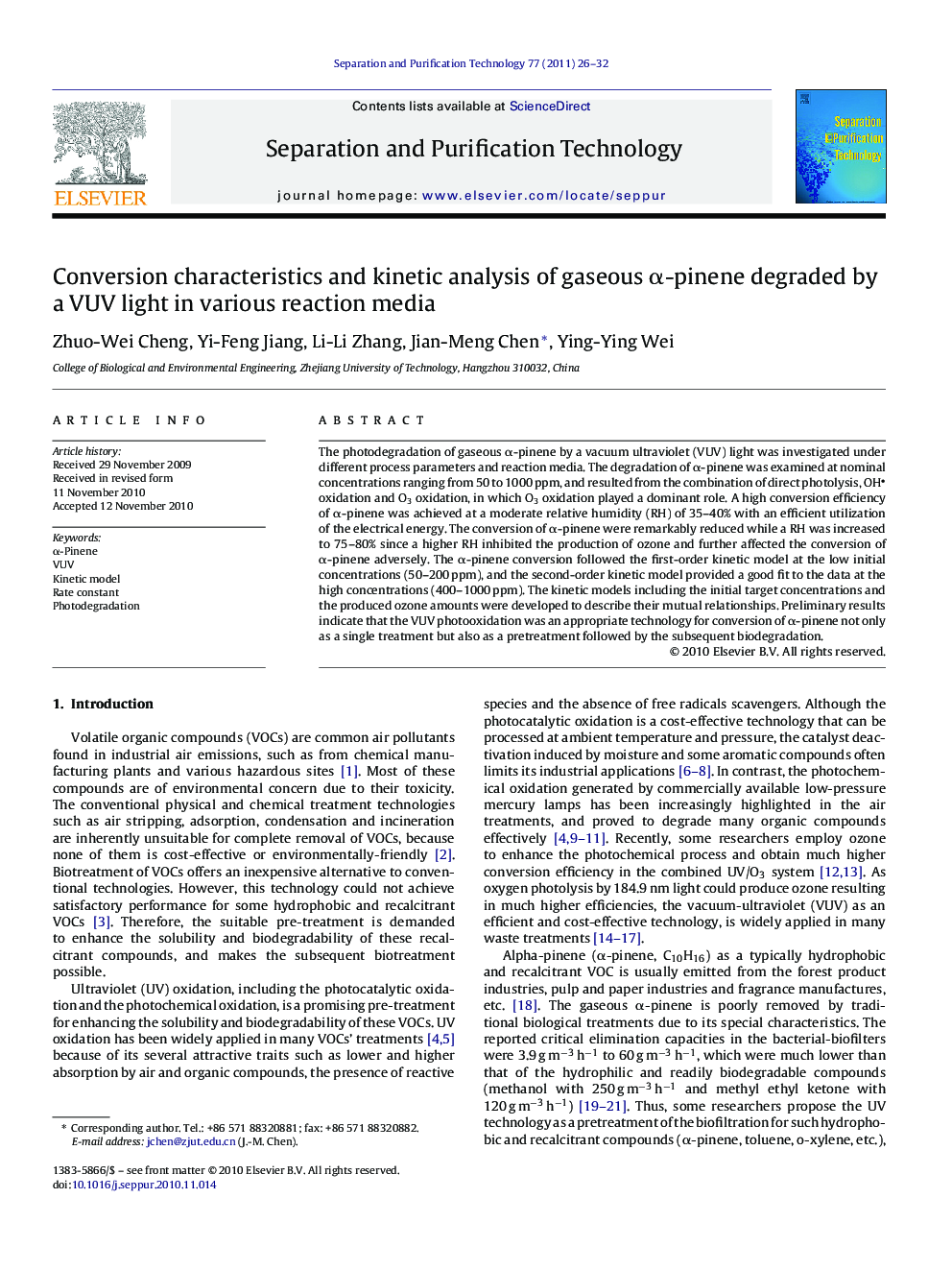| Article ID | Journal | Published Year | Pages | File Type |
|---|---|---|---|---|
| 642839 | Separation and Purification Technology | 2011 | 7 Pages |
The photodegradation of gaseous α-pinene by a vacuum ultraviolet (VUV) light was investigated under different process parameters and reaction media. The degradation of α-pinene was examined at nominal concentrations ranging from 50 to 1000 ppm, and resulted from the combination of direct photolysis, OH oxidation and O3 oxidation, in which O3 oxidation played a dominant role. A high conversion efficiency of α-pinene was achieved at a moderate relative humidity (RH) of 35–40% with an efficient utilization of the electrical energy. The conversion of α-pinene were remarkably reduced while a RH was increased to 75–80% since a higher RH inhibited the production of ozone and further affected the conversion of α-pinene adversely. The α-pinene conversion followed the first-order kinetic model at the low initial concentrations (50–200 ppm), and the second-order kinetic model provided a good fit to the data at the high concentrations (400–1000 ppm). The kinetic models including the initial target concentrations and the produced ozone amounts were developed to describe their mutual relationships. Preliminary results indicate that the VUV photooxidation was an appropriate technology for conversion of α-pinene not only as a single treatment but also as a pretreatment followed by the subsequent biodegradation.
Graphical abstractThe conversion of gaseous α-pinene in the VUV system was attributed to the combination of the direct photolysis, hydroxyl radical oxidation and ozone oxidation. A complex interaction between O3 and OH was present in the system with the introduction of water molecule. A high relative humidity of 75–80% inhibited O3 generation, and further reduced the total conversion of α-pinene. Thus, a moderate relative humidity of 35–40% should be controlled during the photodegradation process.Figure optionsDownload full-size imageDownload as PowerPoint slideResearch highlights▶ Higher relative humidity would affect the ozone formation and α-pinene conversion. ▶ In the combination role of direct photolysis, O3 and OH oxidation, O3 could play the dominant role. ▶ The developed kinetics models predicted well the conversion behaviors of α-pinene. ▶ The results provided a possibility for the combination of VUV technology and biodegradation.
